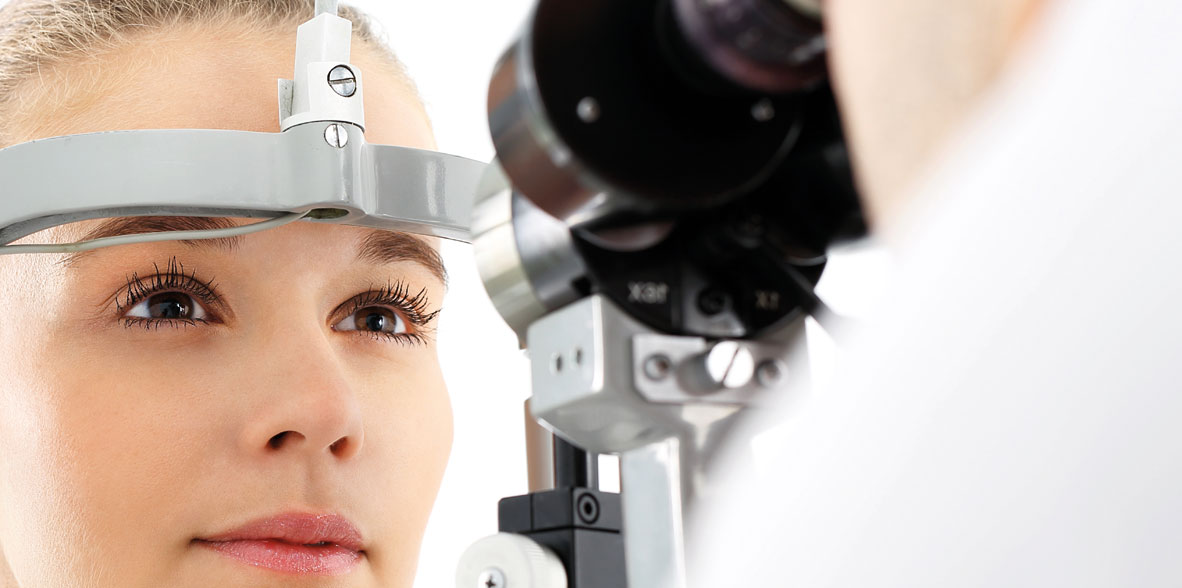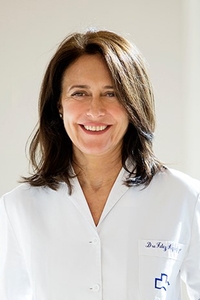

 Centro Médico Teknonen/health-centers/centro-medico-teknon
Centro Médico Teknonen/health-centers/centro-medico-teknon- Centro Médico Teknonen/health-centers/centro-medico-teknon
 Centro Médico Teknonen/health-centers/centro-medico-teknon
Centro Médico Teknonen/health-centers/centro-medico-teknon
Orthokeratology or Ortho-K is the planned modification of the shape of the cornea – the first lens of the eye – in order to reduce or correct myopia. Ortho-K is carried out with special lenses that are used while sleeping, allowing free, clear vision during the day.
It is the corrective treatment of sight defects using lenses for night-time use. Use them all night. See well all day.
- Since when has it been used?
Ortho-K originated in the sixties, when it was discovered that contact lenses change the curvature of the cornea and therefore the grade. While the normal adaptation of lenses seeks to minimise this effect, the aim of Ortho-K is to promote it in order to reduce myopia, astigmatism or hypermetropia.
- How many dioptres can it treat?
To begin with, its effectiveness was limited to low levels of myopia. But, over the last 10 years, new technologies have made it possible to effectively treat myopia of up to 6 dioptres through advances such as corneal topography and the design and manufacture of lenses with geometries that used to be impossible. And advances are currently being made in the treatment of astigmatism and hypermetropy. In addition, the use of new materials hyperpermeable to oxygen allows safe night-time use.
The Ortho-K technique is now an alternative for correcting low- and medium-level myopia.
- When must they be used?
As the cornea is malleable and, at the same time, partially elastic, the lenses must be used every night to maintain the desired effect. If the lenses are not used, the cornea always returns to its original shape. This ensures that the technique is harmless, as all the effects are reversible.
The time of use of the lenses depends on several variables and, although the normal thing is to wear them every night, some patients can use them one night out of every two, or even less frequently.
- Who might be interested in Ortho-K?
The main aim of Ortho-K is to be able to see freely, without glasses or contact lenses, during the day. Freedom from optical aids like glasses and contact lenses makes it ideal for people who do sport. Anyone working in dusty or dirty atmospheres finds glasses or lenses very annoying. Professionals who need good sight without glasses can benefit from Ortho-K.
One very interesting application is in children or young people with incipient myopia, as it not only has the above advantages, several studies have also shown a reduction in the progression of the myopia.
The procedure works very well up to -3.00 dioptres of myopia and -1.00 dioptres of astigmatism. Higher grades, up to -5.00 dioptres, can be corrected depending on the characteristics or response of the cornea.
There are several individual factors determining the viability that need to be assessed in each case.
- What does the initial appointment include?
The initial examination includes a full eye test and corneal topography. This allows the optometrist to assess the case and determine the possible result for the person concerned.
Ortho-K lenses are placed in the eye following the results of the corneal topography in order to cause a gentle modification of the corneal curvature. These lenses will be used for an initial period to assess the response. This will normally involve sleeping with them in for one night and assessing the response the following day. The effect should be a reduction in myopia and astigmatism and an improvement in sight without glasses.
Ortho-K treatment is begun only if the patient's cornea shows a good response in the initial viability test.
- What does the treatment consist of?
Once the patient has shown an appropriate response to the initial test, he/she will begun using the lenses in a regular programme every night. For the first three days, the sight correction may not be enough to see well. In this case disposable lenses can be used during the day. After a week, the sight settles down and the patient can see well all day. Depending on the case, several pairs of lenses may be required to obtain the desired result.
During the first few weeks, periodic checks are made and the lenses are changed as often as necessary. The average treatment time is 3 months.
- What advantages does Ortho-K have over surgery?
- It can be used with thin corneas.
- It is an alternative when refractive surgery is not possible.
- The procedure is reversible.
- Adjustments can be made for changes of grade.
- What other advantages does it have?
- It allows you to see freely without glasses or contact lenses during the day.
- It is reversible.
- It is safe.
- It can be used at any age.



































